Satellites, aircraft, and the International Space Station provided great views of yesterday's solar eclipse, near and far.
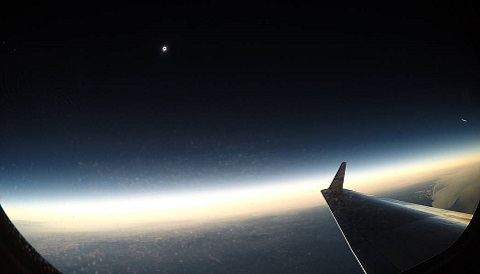
NASA/Carla Thomas
Did you see it? Millions of viewers stood in the path of totality yesterday, as the shadow of the the Moon rolled over the United States from coast to coast for the first time in nearly a century. But while eclipse pilgrims and casual observers alike across the Americas were turning solar-viewing gear skyward to watch the eclipse, eyes in space — both human and electronic — were watching the spectacle unfold from above.
These "eyes" always give us a unique perspective for any eclipse — lunar or solar — a view from a much loftier vantage point.
Chasing the Eclipse
As promised, the crew aboard the International Space Station did indeed witness the dark umbra of the Moon sliding across Illinois and Kentucky around mid-eclipse yesterday at 18:24 Universal Time. For context, the ISS races around the Earth at 17,000 mph, while the umbra was moving at 1,400 mph near mid-totality.
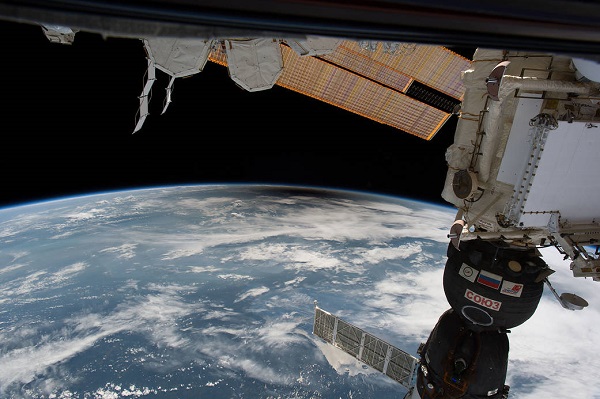
NASA / Randy Bresnik
There's no word yet if ISS astronauts caught the “eclipsed crescent sunset” on the final pass, though earlier on flight engineer Randy Bresnik caught a partially eclipsed Sun:
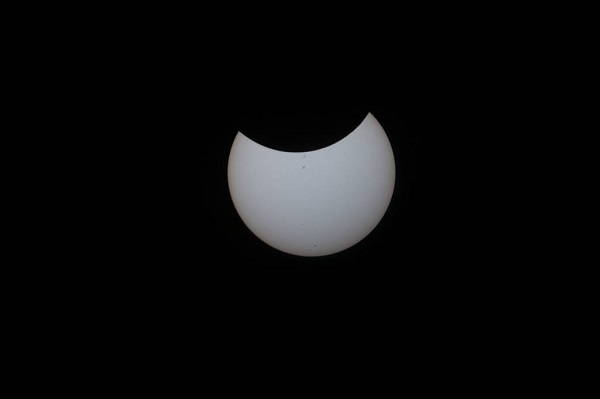
NASA / Randy Bresnik
It's great to have a skilled astrophotographer aboard the International Space Station again!
Eyes on Earth also kept watch for the ISS as well as it flitted across the face of the partially eclipsed Sun:
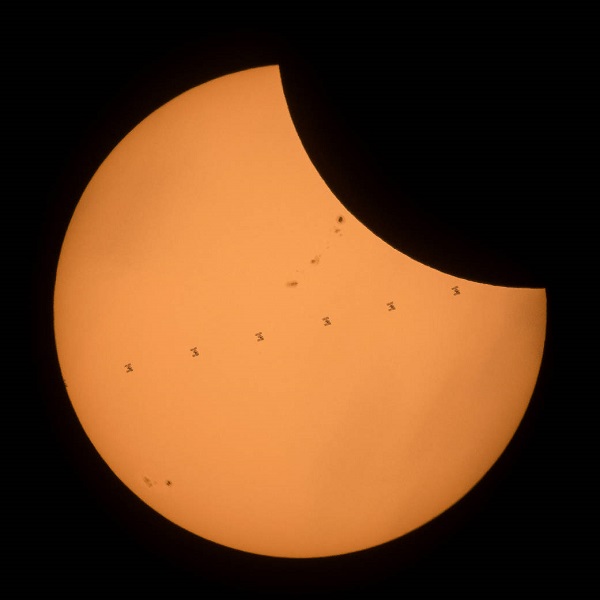
NASA / Joel Kowsky
Farther out, the National Oceanic and Atmospheric Administration's GOES-16 satellite caught sight of the umbra from its vantage point in geostationary orbit, 26,200 miles distant.
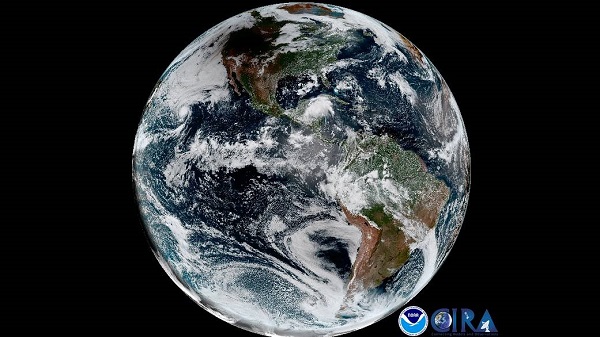
NOAA/GOES-16
Meanwhile, NASA's Deep Space Climate Observatory DSCOVR satellite had an amazing view looking back at the Earth from its perch a million miles distant at the sunward L1 Lagrange point:

NASA / DSCOVR / EPIC
Why doesn't the Moon photo-bomb EPIC's view during the total solar eclipse? Because DSCOVR orbits the stable L1 Lagrange point in a lissajous or “halo orbit,” affording it a view of the Moon-Earth lineup slightly skewed to one side.
Other solar observing satellites caught the eclipse from different vantage points. The European Space Agency's Proba-2 saw the eclipse several times from low Earth orbit:
Hinode, a joint NASA and Japan Aerospace Exploration Agency (JAXA) mission, also captured the view. Keep in mind that eclipses in low-Earth orbit are quick, measured in tens of seconds on each pass.
NASA's Solar Dynamics Observatory also captured the view from its geosynchronous orbit vantage point:
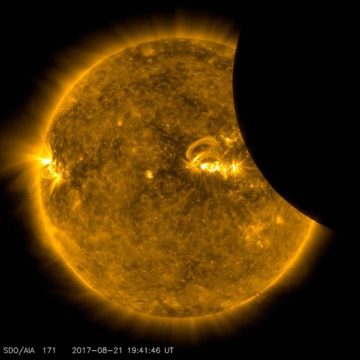
NASA / SDO
Launched on February 11, 2010, from Cape Canaveral, Florida, the Solar Dynamics Observatory has become a workhorse for solar astronomy in space. And this comes at an auspicious time, as the Sun heads towards another profound minimum between solar cycle #24 and #25. We were lucky to have sunspots to show the public for yesterday's eclipse!
And finally, Earthbound and space-based observers combined forces to give us some context on the shape and extent of the solar corona at totality. Launched in 1995, NASA's Solar Heliospheric Observatory (SOHO) also orbits the Sun from the L1 Earth Lagrange point one million miles Earthward. SOHO's two Large Angle Spectrometric Coronograph (LASCO) C2 and C3 cameras have experienced artificial "eclipses" for over two decades. As you can see, the view seen on Monday from Earth extends well out into space:
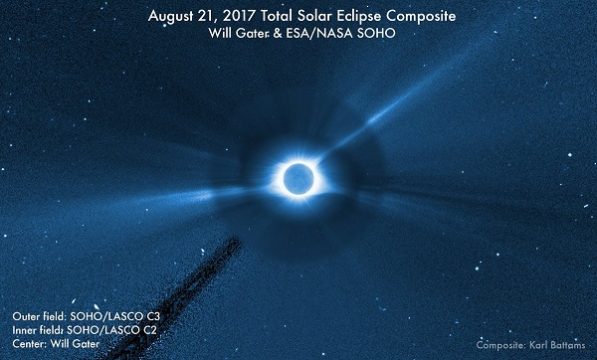
Will Gater / NASA / SOHO / Karl Battams
These are some amazing views of an awe-inspiring spectacle, one of the greatest that nature can produce.
 2
2









Comments
North Star Gazer
August 23, 2017 at 6:42 pm
Even though I wasn't able to see the total eclipse, it was a lot of fun to look for the partial eclipse and to just be a part of something that the whole nation got excited about! I blogged about my experience on my amateur astronomer's blog https://northstargazer.blogspot.com/2017/08/its-eclipse-day.html
You must be logged in to post a comment.
patrickchassaing
September 14, 2017 at 4:26 pm
I would appreciate a recommendation to help me find a book which includes charts which depict the tilt of the moon’s orbit around the earth, including with reference to when (time of year) that orbit is at its highest/lowest angle relative to the equator. Also, I am looking for charts which depict the system used by astronomers to reference the earth’s orbit around the sun (bearing?) and the “north” (up) and “south” (down) within the solar our system and the same info as to the sun’s orientation to our galaxy.
Any help would be much appreciated! Thanks!
Email: [email protected]
You must be logged in to post a comment.
You must be logged in to post a comment.